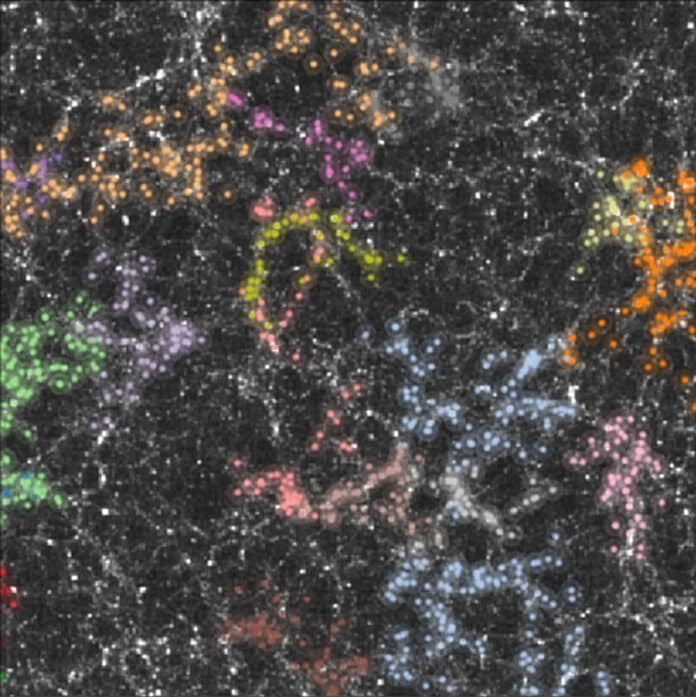The distribution of galaxies shows how the matter was distributed in the early Universe. As a result, it contains data on various cosmological variables, including the density of matter. The ideal method for data analysis is still up for debate. Although this approach is considered inadequate, most studies concentrate on calculating the correlation functions of the galaxy distribution and comparing them to physical models.
While many alternatives have been proposed, there needs to be more consensus on which have practical utility, and few are natural from a theoretical standpoint.
A new study shows that tools from the theory of disordered heterogeneous media are well suited to characterizing the distribution of galaxies and yielding further information on the Universe’s structure and evolution.
Based on a series of simulations, scientists have started to explore the heterogeneous structure of the Universe by analyzing the distribution of galaxies as a collection of points rather than as a continuous distribution, similar to the individual particles of matter that make up a material. This method has made it possible to quantify the relative disorder of the Universe and use mathematics created for materials science to understand the Universe’s fundamental structure better.
Oliver Philcox, a co-author of the study, said, “What we found was that the distribution of galaxies in the universe is quite different from the physical properties of conventional materials, having its unique signature.”
Scientists analyzed the public simulation data generated by Princeton University and the Flatiron Institute. One billion dark matter “particles” make up each of the 1,000 simulations, and the clusters they create through gravitational evolution act as stand-ins for galaxies.
One of the paper’s key findings is the correlations between pairs of galaxies that are topologically connected using the pair-connectedness function. The research team demonstrated that, on larger scales (on the order of several hundred megaparsecs), the Universe approaches hyperuniformity. In contrast, on smaller scales (up to 10 megaparsecs), it becomes almost antihyperuniform and strongly inhomogeneous. Based on this and the variety of other descriptors that emerge in the theory of heterogeneous media.
Salvatore Torquato, frequent Member and Visitor at the Institute for Advanced Study and Lewis Bernard Professor of Natural Sciences based in Princeton University’s chemistry and physics departments, said, “The perceived shift between order and disorder depends largely on scale. The pointillist technique of Georges Seurat in the painting A Sunday on La Grande Jatte produces a similar visual effect; the work appears disordered when viewed up close and highly ordered from afar. In terms of the Universe, the degree of order and disorder is more subtle, as with a Rorschach inkblot test that can be interpreted in infinite ways.”
The scientists created a consistent and impartial framework for evaluating order thanks to statistical methods, including nearest-neighbor distributions, clustering diagnostics, Poisson distributions, percolation thresholds, and the pair-connectedness function. These conclusions, therefore, apply to various other dynamical physical systems even though they were formulated in a cosmic framework.
Scientists noted, “This interdisciplinary work, combining the techniques of cosmology and condensed matter physics, has future implications for both fields. Beyond the distribution of galaxies, many other features of the Universe can be explored with these tools, including cosmic voids and the ionized hydrogen bubbles that formed during the reionization phase of the Universe.”
Journal Reference:
- Oliver H. E. Philcox and Salvatore Torquato. Disordered Heterogeneous Universe: Galaxy Distribution and Clustering across Length Scales. Physical review X. DOI: 10.1103/PhysRevX.13.011038
